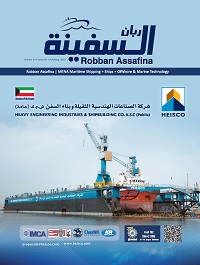Samsung and BASF Join Forces to Design Onboard Carbon Capture System
Samsung Heavy Industries is joining forces with Swiss chemicals giant BASF to adapt a carbon capture system for maritime use.
BASF's "OASE blue" carbon capture technology uses "highly stable, low-maintenance innovative solvent solutions" to remove carbon dioxide from flue gas, and it was developed as a high-throughput system for large point source emitters like powerplants. The BASF amine scrubbing process is used in more than 200 plants around the world to scrub CO2 and other acid gases out of a variety of process streams, including flue gas.
Together, BASF and Samsung Heavy Industries will carry out a feasibility study to look into the practicality of capturing CO2 on board ships using BASF’s technology. The scope of the project includes a study of what it would take to marinize the system, followed by design and construction of a carbon capture unit for a stack. SHI will handle the feasibility study for installation on merchant ships.
The final product is intended to be compatible with the IMO 2030 goal of a 40 percent carbon intensity reduction.
“Through cooperation with BASF, Samsung Heavy Industries has developed efficient Onboard Carbon Capture system, which will help gain a competitive advantage in a low carbon shipping market,” said Youngkyu Ahn, Head of Shipbuilding Sales Engineering at Samsung Heavy Industries.
The partnership adds to a small but growing ecosystem of carbon-capture systems for maritime use, like Value Maritime and Headway. ABS predicts that investment in these systems will increase over the course of the decade to come, though the technology still has a ways to go before it is fully developed. It can draw a considerable amount of power to run, and the CO2 captured by the process weighs more than the bunker fuel it originates from.
Any deployment of carbon capture will also have to be coupled with the development of long term carbon storage infrastructure to handle the CO2 offloaded from capture-capable ships. The global carbon sequestration market is only just getting started with initial projects, like Norway's Longship CCS initiative.
Source: The Maritime Executive
| Read Here | |
 |
|



































